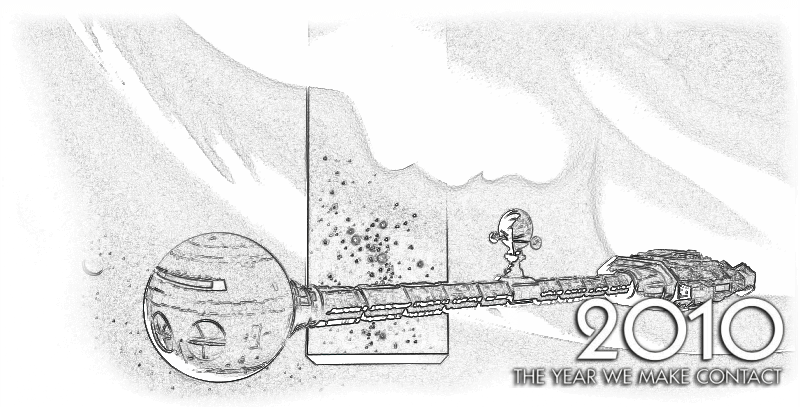Micros help California-based special effects filmmakers create images of outer space.
MARINA DEL REY, Calif.
A microcomputer-based solid modeling system played a major supporting role in Metro-Goldwyn-Mayer/United Artist Co,'s (MGM/UA) motion picture 2010, which opened late last year in the U.S.
The Cubicomp Corp. Polycad/10 system, which generates three-dimensional shaded images, was used with an IBM Personal Computer and proprietary software, plus software designed by John Wash and Richard Hollander of Video Image, the production company responsible for the video display images. Wash said the system produced nearly all the video display images that filled the interior of the film's major set - the Leonov space ship on its voyage to a rendezvous near Jupiter.
Video Image used the system to develop an hour of computer animation at its shop near the MGM/UA soundstage where much of 2010, the sequel to the 1968 film 2001: A Space Odyssey, was filmed, Wash said. The company later fed those images to CRT displays on the set of both the Leonov and its mission target, the Discovery.
Video Image chose the Polycad/10 system about 1½ years ago, Wash said. "We did not want to support a VAX or something that big," he said. The system's 512- by 512-pixel resolution was adequate for what the company wanted, and other systems the company looked at did not have as much software support, he said.
Images on the system can be rotated, rescaled and repositioned interactively using the keyboard and graphics tablet with no programming knowledge required, Wash said.
 |
| Computer-generated image of the Leonov spaceship in flight. |
Video Image combined the Polycad/10 system with Cubicomp's two-dimensional computer paint program and its own animation master-control package, aptly named HAL after the HAL9000 computer that "starred" in both films, Wash said.
The system's chief benefit to Video Image, according to Wash, is that the company can create data bases for the spacecraft, planets and other structures used in a movie and then use the data bases a number of times and from different angels to animate the objects. Wash said he is pleased with the ease of making changes.
Because Video Image bought one of the first systems delivered, it had to work around limitations in the available software, Wash said. The system's software does not allow for changing camera viewpoints, he said. It has a fixed viewpoint that Video Image has to work around, he added.
2001: A Space Odyssey used only a couple of computer-generated sequences, produced on a pen plotter and photographed on a display screen.
"If you want to fly around an object and see it from the viewer's point of view, you can't do it," he said.
Wash and Hollander, an engineer and programmer with Video Image, created sequences that were integral to the plot of 2010, as well as generic material shown in the background, Wash said. Among the more spectacular footage was a sequence depicting a computer flyby of Europa, one of the moons of Jupiter, which duplicates film taken of a model of the moon's surface using single-frame animation, he said.
Background sequences ran the gamut of what might be expected on an interplanetary space flight: navigation readouts, status reports, radar sweeps, crew schedules and medical reports, Wash said. Video Image performed its own art direction for these sequences, working directly with Peter Hyams, director and producer of the film.
Wash said that 2001: A Space Odyssey used only a couple of computer-generated sequences, produced on a pen plotter and photographed on a display screen. The remainder were created using traditional animation techniques with no computer involvement, he said.
By comparison, Video Image produced virtually all its display sequences on its computer system, Wash said. Hence, the computerized images were generated by a computer and displayed on actual video monitors, rather than being projected from the rear of the set.
(First published in Computerworld, March 4, 1985. Copyright © 1985 Computerworld.)



